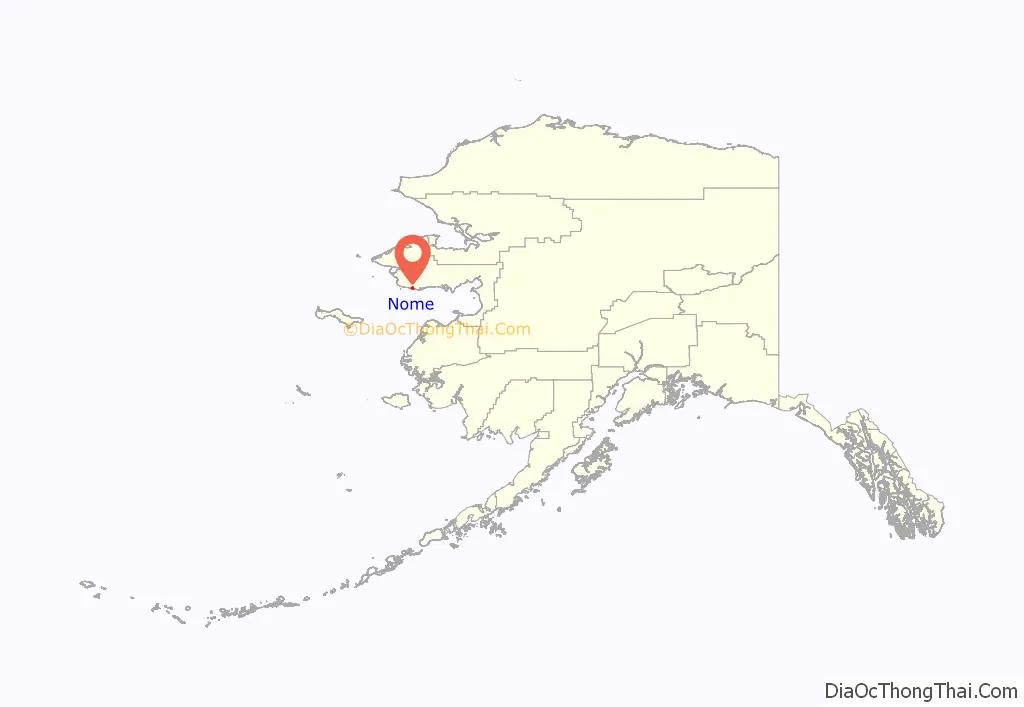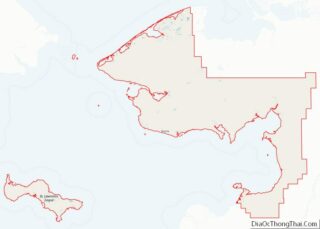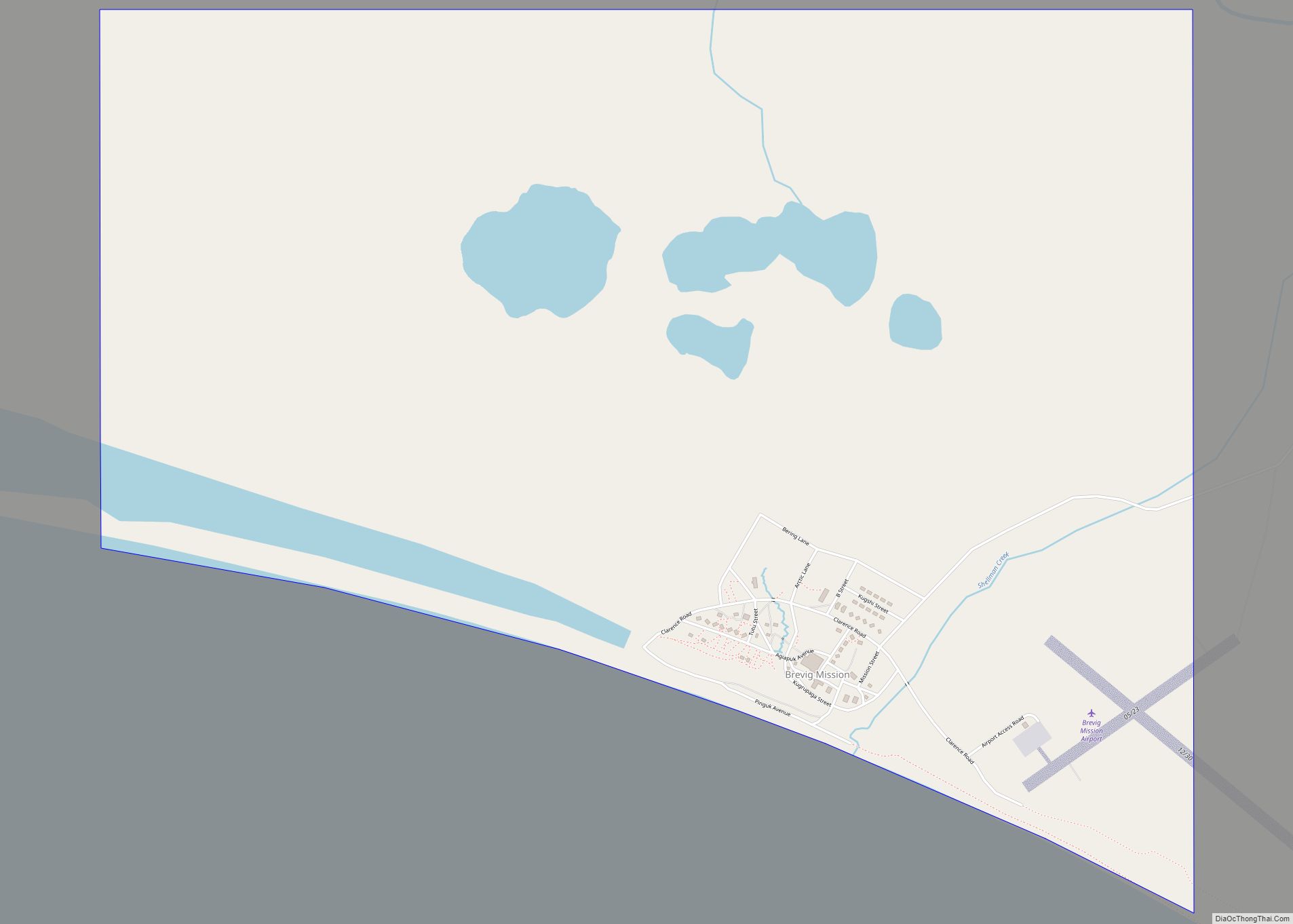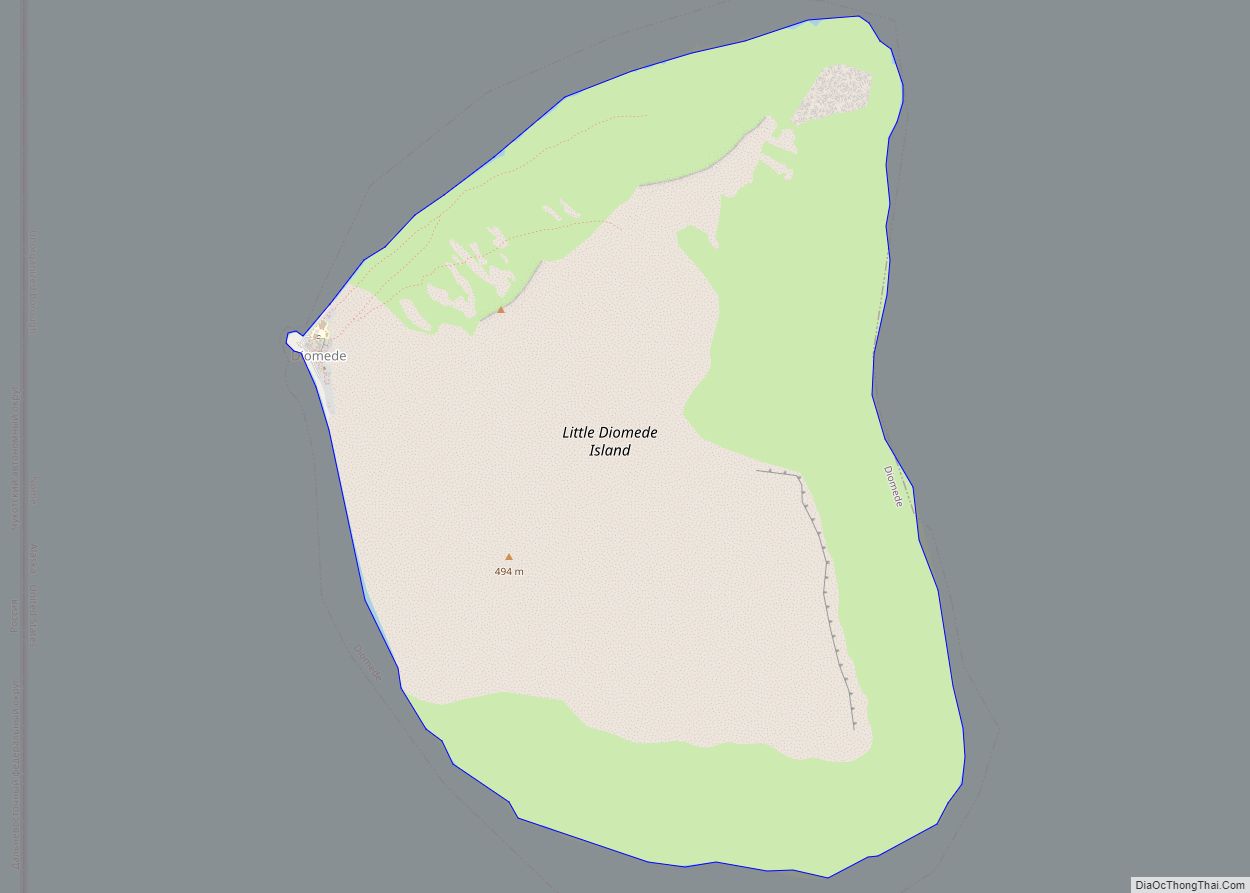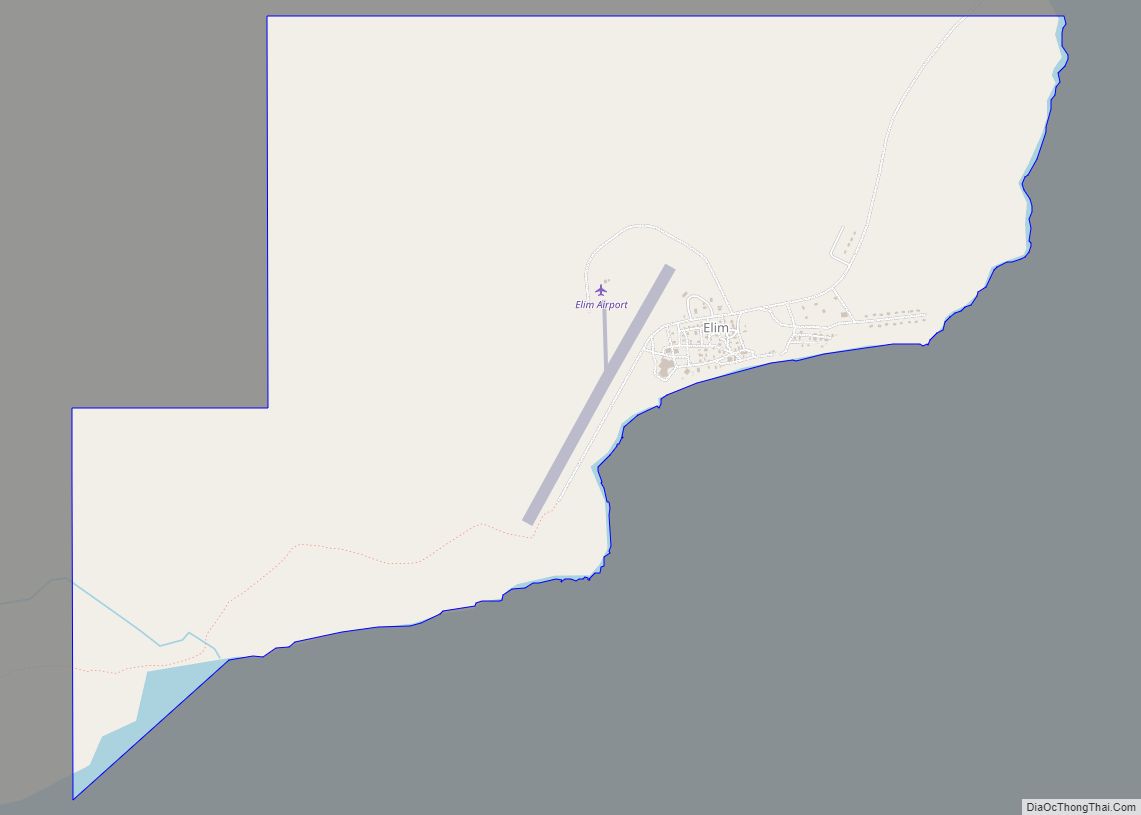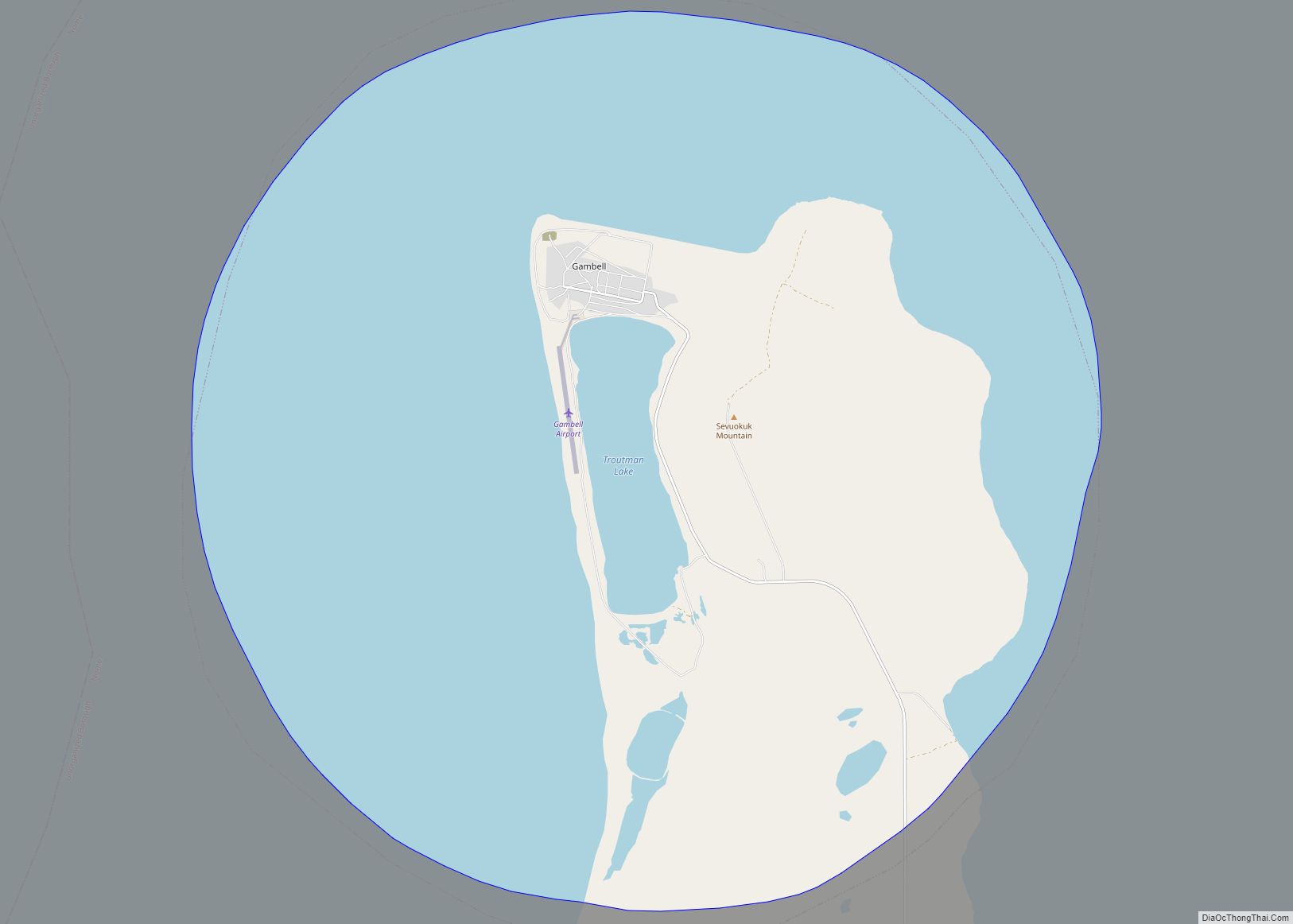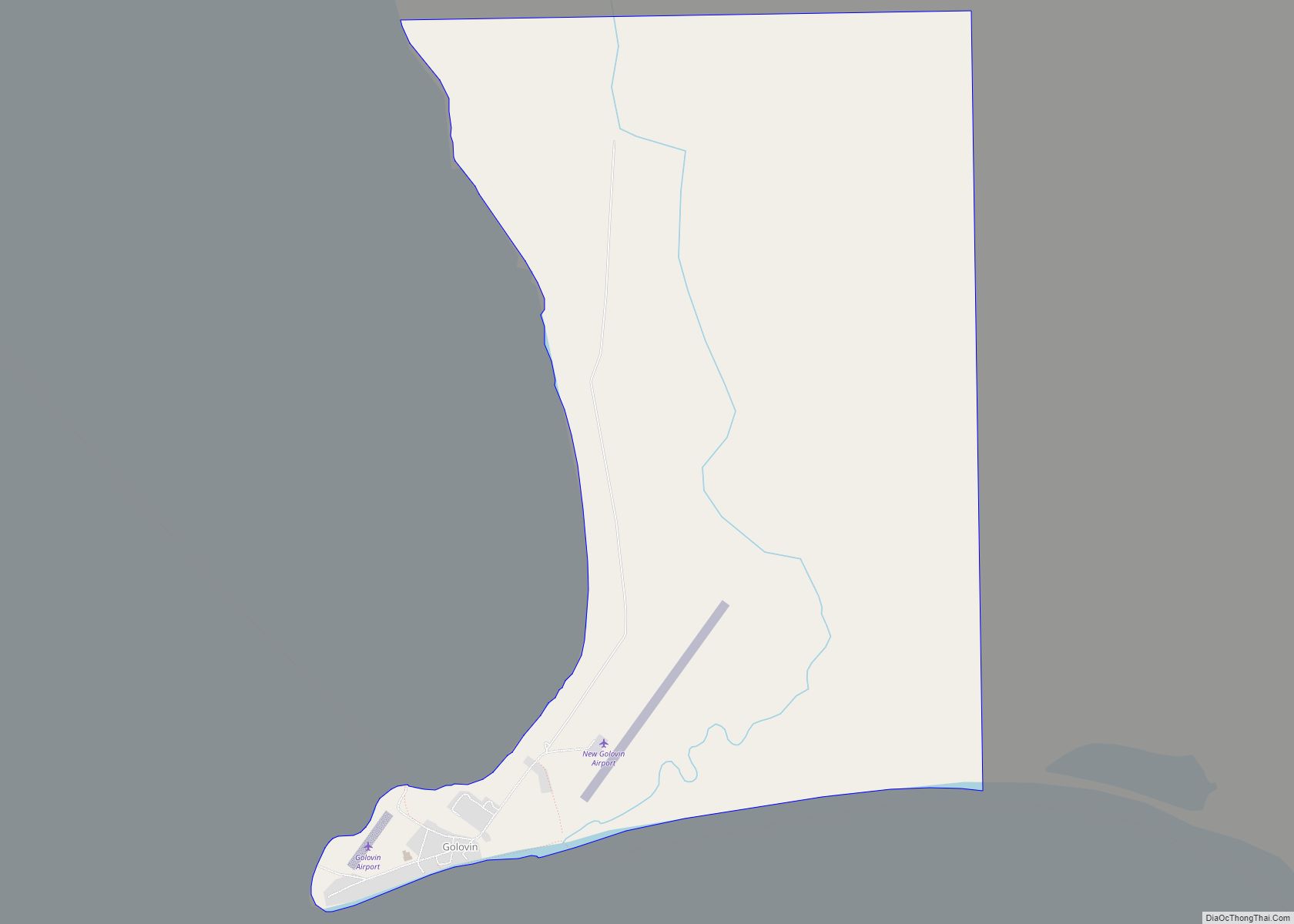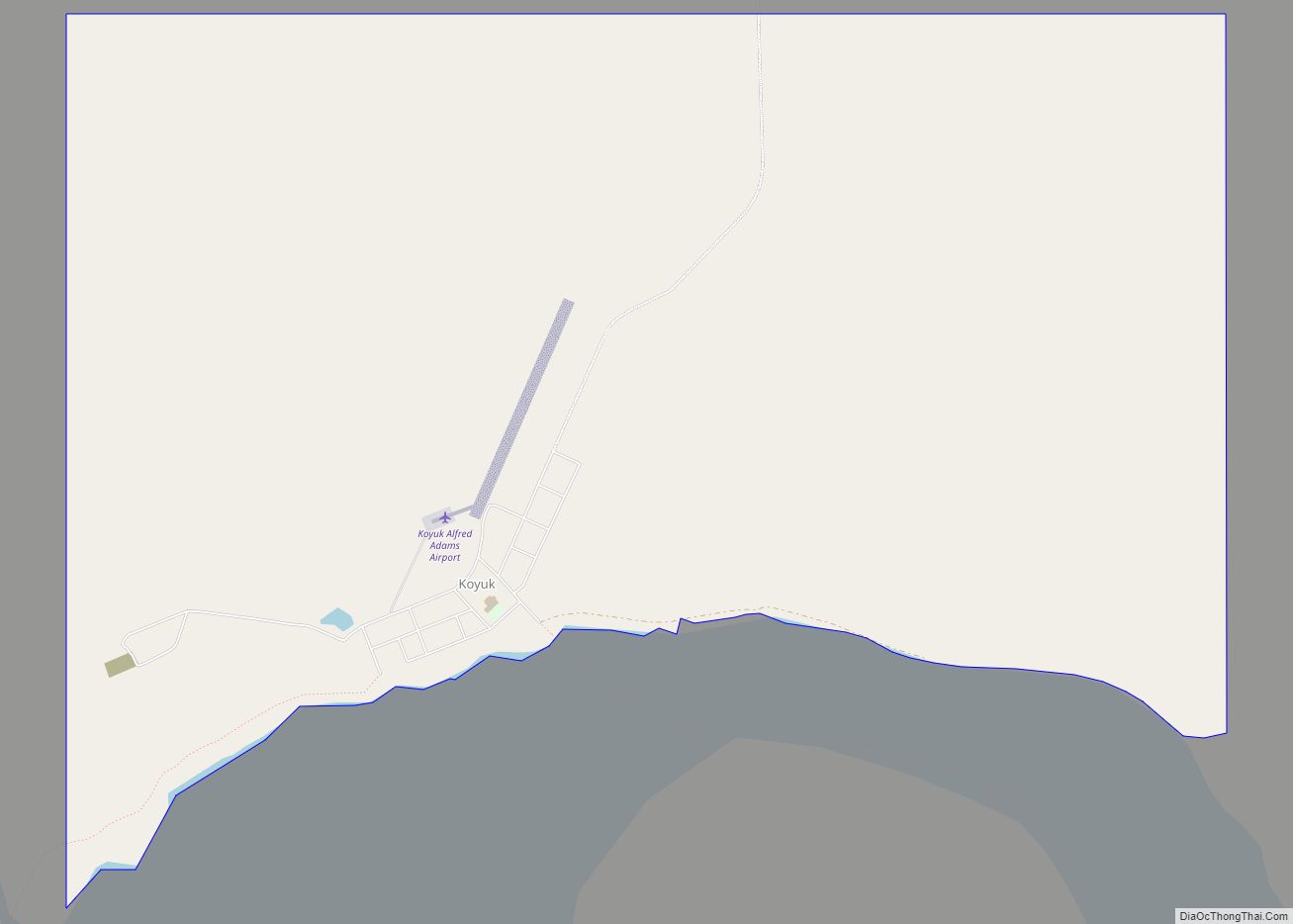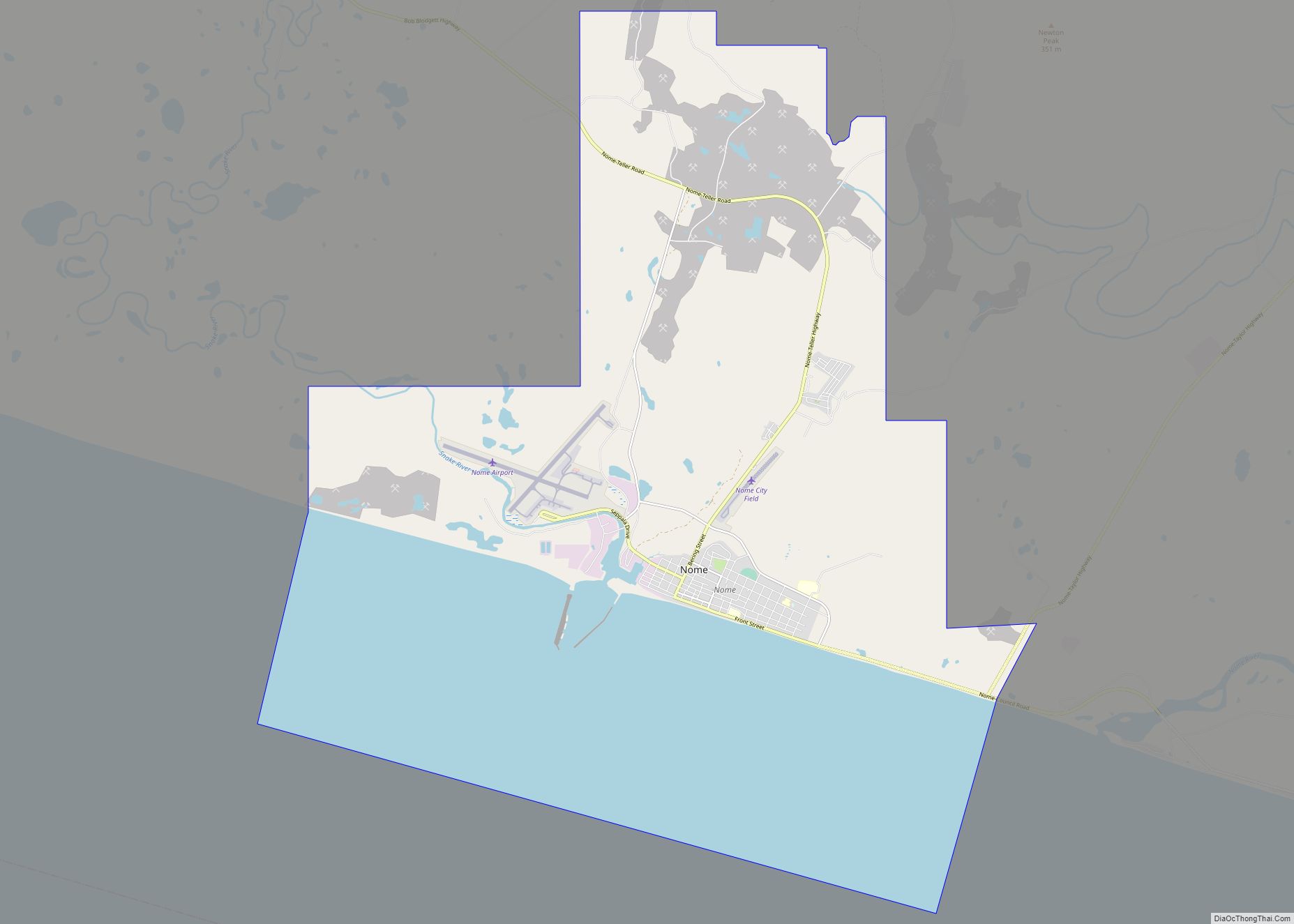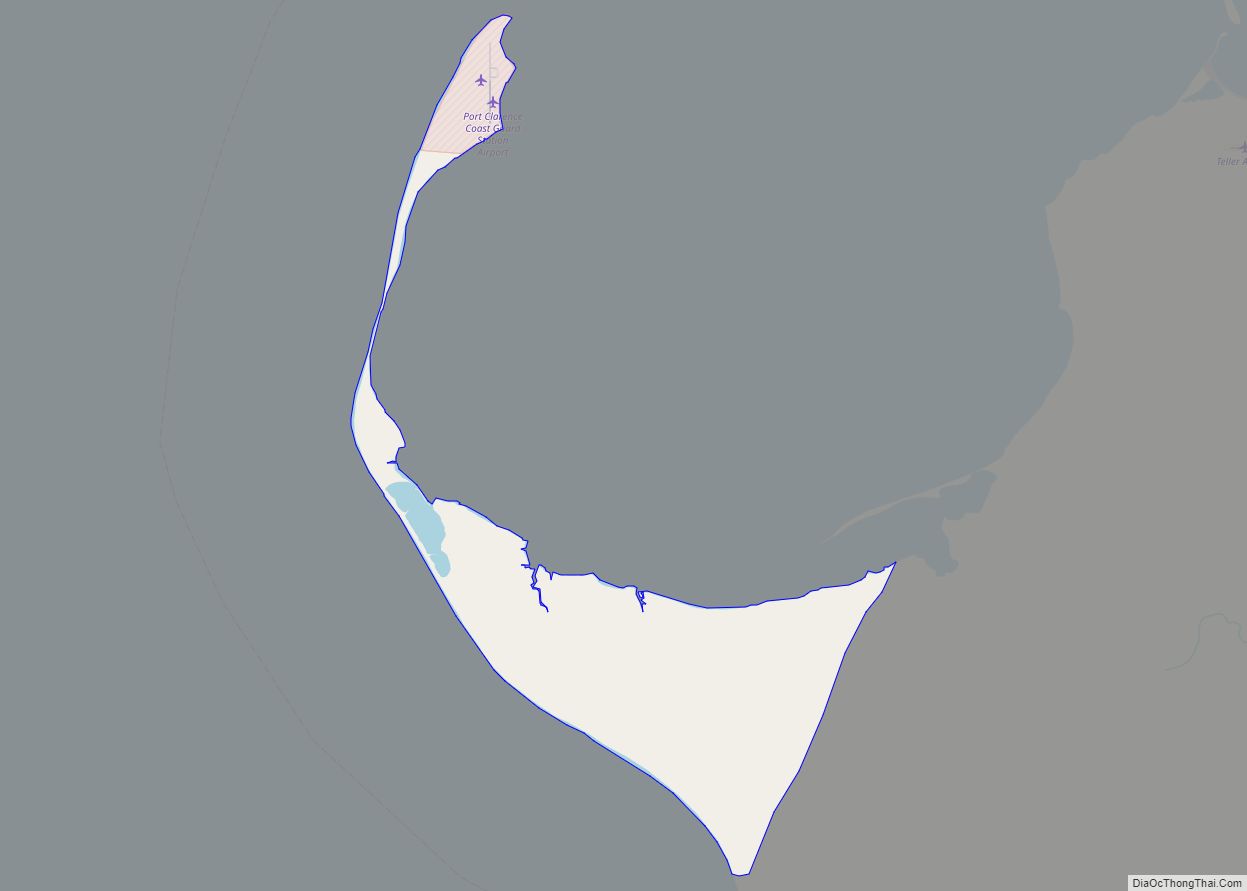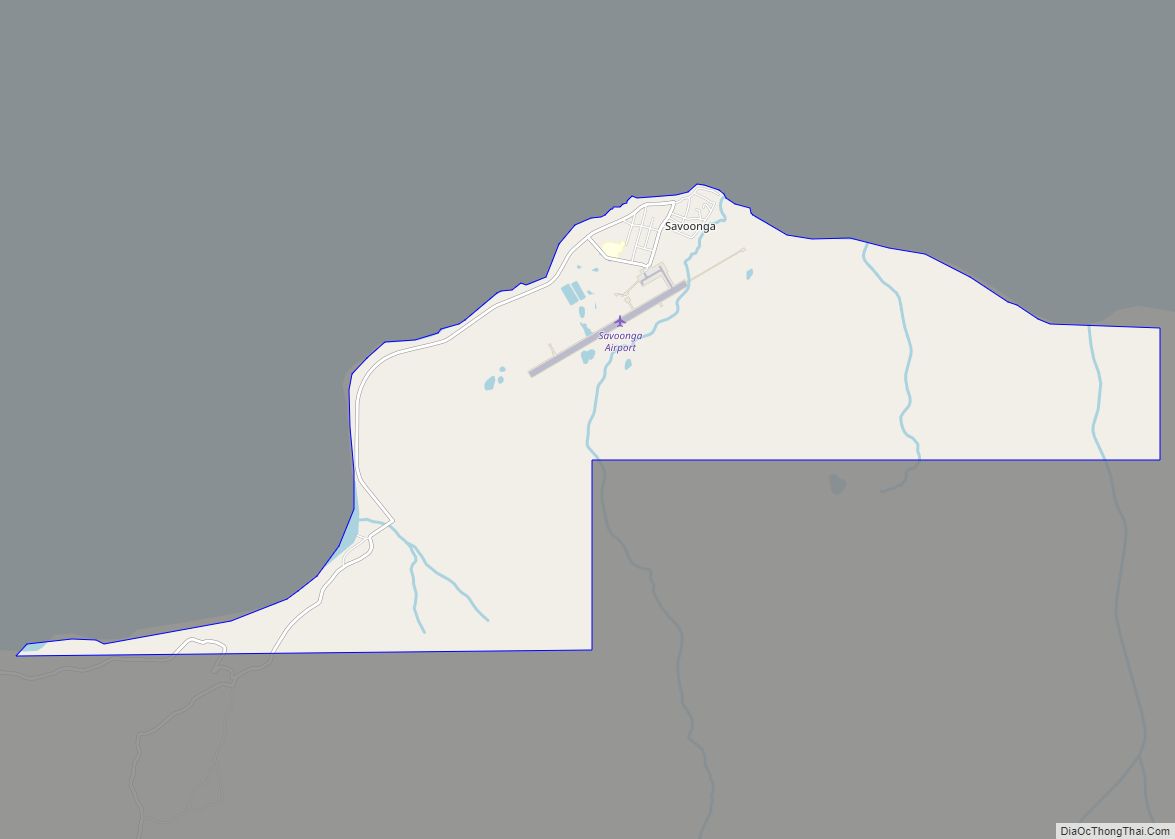Nome (/ˈnoʊm/; (Inupiaq: Sitŋasuaq, pronounced [sitŋɐsuɑq], also Sitŋazuaq, Siqnazuaq)) is a city in the Nome Census Area in the Unorganized Borough of Alaska, United States. The city is located on the southern Seward Peninsula coast on Norton Sound of the Bering Sea. It had a population of 3,699 recorded in the 2020 census, up from 3,598 in 2010. Nome was incorporated on April 9, 1901, and was once the most-populous city in Alaska. Nome lies within the region of the Bering Straits Native Corporation, which is headquartered in Nome.
The city of Nome also claims to be home to the world’s largest gold pan, although this claim has been disputed by the Canadian city of Quesnel, British Columbia.
In the winter of 1925, a diphtheria epidemic raged among Alaska Natives in the Nome area. Fierce territory-wide blizzard conditions prevented the delivery of a life-saving diphtheria antitoxin serum by airplane from Anchorage. A relay of dog sled teams was organized to deliver the serum. Today, the Iditarod Dog Sled Race follows the same route they took and ends in Nome.
| Name: | Nome city |
|---|---|
| LSAD Code: | 25 |
| LSAD Description: | city (suffix) |
| State: | Alaska |
| County: | Nome Census Area |
| Incorporated: | April 12, 1901 |
| Elevation: | 20 ft (6 m) |
| Total Area: | 21.49 sq mi (55.7 km²) |
| Land Area: | 12.80 sq mi (33.2 km²) |
| Water Area: | 8.69 sq mi (22.5 km²) |
| Total Population: | 3,699 |
| Population Density: | 289.01/sq mi (111.59/km²) |
| ZIP code: | 99762 |
| Area code: | 907 |
| FIPS code: | 0254920 |
| Website: | www.nomealaska.org |
Online Interactive Map
Click on ![]() to view map in "full screen" mode.
to view map in "full screen" mode.
Nome location map. Where is Nome city?
History
Pre-history
Inupiat hunted for game on the west coast of Alaska from prehistoric times and there is recent archeological evidence to suggest that there was an Inupiat settlement at Nome, known in Inupiat as Sitnasuak, before the discovery of gold.
Gold rush
In the summer of 1898, the “Three Lucky Swedes”: Norwegian-American Jafet Lindeberg, and two naturalized American citizens of Swedish birth, Erik Lindblom and John Brynteson, discovered gold on Anvil Creek. News of the discovery reached the outside world that winter. By 1899, Nome had a population of 10,000 and the area was organized as the Nome mining district. In that year, gold was found in the beach sands for dozens of miles along the coast at Nome, which spurred the stampede to new heights. Thousands more people poured into Nome during the spring of 1900 aboard steamships from the ports of Seattle and San Francisco. By 1900, a tent city on the beaches and on the treeless coast reached 48 km (30 mi), from Cape Rodney to Cape Nome. In June of that year, Nome averaged 1000 newcomers a day.
In 1899, Charles D. Lane founded Wild Goose Mining & Trading Co. His company constructed the Wild Goose Railroad from Nome to Dexter Discovery; it was extended (1906-1908) to the village of Shelton, also known as Lanes Landing.
Many late-comers tried to “jump” the original claims by filing mining claims covering the same ground. The federal judge for the area ruled the original claims valid, but some of the claim jumpers agreed to share their invalid claims with influential Washington politicians. Alexander McKenzie took an interest in the gold rush and secured the appointment of Arthur Noyes as the federal district judge for the Nome region for the purpose of taking control of gold placer mines in Nome. McKenzie seized mining claims with an unlawfully procured receivership granted by Judge Noyes. McKenzie’s claim-jumping scheme was eventually stopped by the federal Ninth Circuit Court of Appeals. However, the episode provided the plot for Rex Beach’s best-selling novel The Spoilers (1906), which was made into a stage play, then five times into movies, including two versions starring John Wayne: The Spoilers (co-starring Marlene Dietrich) and North to Alaska (1960, the theme of which mentions Nome.) Wyatt Earp, of Tombstone, Arizona, fame, lived in Nome during gold-rush days – in September 1899, Earp and partner Charles E. Hoxie built the Dexter Saloon, the city’s first two-story wooden building and its largest and most luxurious saloon out of more than 60 saloons.
During the period from 1900 to 1909, estimates of Nome’s population reached as high as 20,000. The highest recorded population of Nome, in the 1900 United States Census, was 12,488. At this time, Nome was the largest city in the Alaska Territory. Early in this period, the U.S. Army policed the area, and expelled any inhabitant each autumn who did not have shelter (or the resources to pay for shelter) for the harsh winter.
By 1910 Nome’s population had fallen to 2,600, and by 1934, to less than 1,500.
In May 1910, the Industrial Worker, the newspaper of the Industrial Workers of the World (IWW), published a notice from the Nome Miners’ Union and Local 240 of the Western Federation of Miners for all unemployed workers to stay away, saying that “All the rich mines are practically worked out.”
Fires in 1905 and 1934, as well as violent storms in 1900, 1913, 1945 and 1974, destroyed much of Nome’s gold rush-era architecture. The pre-fire “Discovery Saloon” is now a private residence and is being slowly restored as a landmark.
The Black Wolf Squadron, under the command of Capt. St. Clair Streett, landed here on August 23, 1920, after the culmination of a 4527-mile flight from Mitchel Field. Noel Wien and Gene Miller based their air services from Nome in June 1927.
Serum run
In 1925, Nome was the destination of the famous Great Race of Mercy, in which dog sleds played a large part in transporting diphtheria antitoxin serum through harsh conditions. In 1973, Nome became the ending point of the 1,049+ mi (1,600+ km) Iditarod Trail Sled Dog Race. The latter part of its route was used in the serum run.
The sled driver of the final leg of the relay was the Norwegian-born Gunnar Kaasen; his lead sled dog was Balto. A statue of Balto by F.G. Roth stands near the Central Park Zoo in Central Park, New York City. Leonhard Seppala ran the penultimate, and longest, leg of the 1925 serum run to Nome. One of his dogs, Togo, is considered the forgotten hero of the Great Race of Mercy; another of his dogs, Fritz, is preserved and on display at the Carrie M. McLain Memorial Museum in Nome.
World War II and later
During World War II, Nome was the last stop on the ferry system for planes flying from the United States to the Soviet Union for the Lend-lease program. The airstrip currently in use was built and troops were stationed there. One “Birchwood” hangar remains and has been transferred to a local group with hopes to restore it. It is not located on the former Marks Air Force Base (now the primary Nome Airport); rather it is a remnant of an auxiliary landing field a mile or so away: “Satellite Field”. In the hills north of the city, there were auxiliary facilities associated with the Distant Early Warning system that are visible from the city but are no longer in use.
Total gold production for the Nome district has been at least 3.6 million troy ounces (110,000 kg).
Nome’s population decline continued after 1910 although at a fairly slow rate. By 1950 Nome had 1,852 inhabitants. By 1960 the population of Nome had climbed to 2,316. At this point placer gold mining was still the leading economic activity. The local Alaska Native population was involved in ivory carving and the U.S. military had stationed troops in the city also contributing to the local economy.
The Hope Sled Dog Race was run between Anadyr, Russia, and Nome after the fall of the Soviet Union. The race continued for more than a decade, but has not been run since approximately 2004.
Nome Road Map
Nome city Satellite Map
Geography
Nome is located at 64°30′14″N 165°23′58″W / 64.50389°N 165.39944°W / 64.50389; -165.39944 (64.503889, −165.399444). According to the United States Census Bureau, the city has a total area of 21.6 square miles (56 km), of which 12.5 square miles (32 km) is land and 9.1 square miles (23.6 km) (41.99%) is water.
Nome has a subarctic climate (Köppen Dfc), with long, very cold winters, and short, cool summers. However, conditions in both winter and summer are moderated by the city’s coastal location; winters are less severe than in the Interior, and conversely, summers are lukewarm. For example, Fairbanks at a similar parallel quite far inland has much greater temperature swings with both very warm and cold temperatures throughout the year. Even so, Nome is influenced by Far East Russia’s cold landmass and as a result the climate is much colder than in coastal Scandinavia at similar latitudes.
The coldest month is January, averaging 5.6 °F (−14.7 °C), although highs on average breach the freezing point on 2–4 days per month from December to March and there are 76 days annually of 0 °F (−17.8 °C) or lower temperatures, which have been recorded as early as October 12 in 1996 and as late as May 5 in 1984. Average highs stay below freezing from late October until late April, and the average first and last dates of freezing lows are August 30 and June 9, respectively, a freeze-free period of 81 days. The warmest month is July, with an average of 52.0 °F (11.1 °C); temperatures rarely reach 80 °F (27 °C) or remain above 60 °F (16 °C) the whole night. Snow averages 82.8 inches (210 cm) per season, with the average first and last dates of measurable (≥0.1 inches or 0.25 centimetres) snowfall being October 4 and May 16; accumulating snow has not been officially observed in July or August. Precipitation is greatest in the summer months, and averages 17.22 inches (437.4 mm) per year. The annual average temperature is 28.0 °F (−2.2 °C).
Extreme temperatures range from −54 °F (−48 °C) on January 27–28, 1989 up to 86 °F (30 °C) on June 19, 2013 and July 31, 1977; the record cold daily maximum is −40 °F (−40 °C), set on January 28–29, 1919, while, conversely, the record warm daily minimum is 64 °F (18 °C) on July 20, 1993 and August 14, 1926. The coldest day of the year averaged −17 °F (−27 °C) in the 1991 to 2020 normals, while the warmest night average was at 57 °F (14 °C). The coldest has been February 1990 with a mean temperature of −17.2 °F (−27.3 °C), while the warmest month was August 1977 at 56.3 °F (13.5 °C); the annual mean temperature has ranged from 21.1 °F (−6.1 °C) in 1920 to 32.5 °F (0.3 °C) in 2016.
Bering Sea water temperatures around Nome vary during summer from 34 to 48 °F (1.1 to 8.9 °C).
See or edit raw graph data.
Note
- ^ Mean monthly maxima and minima (i.e. the highest and lowest temperature readings during an entire month or year) calculated based on data at said location from 1991 to 2020.
See also
Map of Alaska State and its subdivision:- Aleutians East
- Aleutians West
- Anchorage
- Bethel
- Bristol Bay
- Denali
- Dillingham
- Fairbanks North Star
- Haines
- Juneau
- Kenai Peninsula
- Ketchikan Gateway
- Kodiak Island
- Lake and Peninsula
- Matanuska-Susitna
- Nome
- North Slope
- Northwest Arctic
- Prince of Wales-Outer Ketchi
- Sitka
- Skagway-Yakutat-Angoon
- Southeast Fairbanks
- Valdez-Cordova
- Wade Hampton
- Wrangell-Petersburg
- Yukon-Koyukuk
- Alabama
- Alaska
- Arizona
- Arkansas
- California
- Colorado
- Connecticut
- Delaware
- District of Columbia
- Florida
- Georgia
- Hawaii
- Idaho
- Illinois
- Indiana
- Iowa
- Kansas
- Kentucky
- Louisiana
- Maine
- Maryland
- Massachusetts
- Michigan
- Minnesota
- Mississippi
- Missouri
- Montana
- Nebraska
- Nevada
- New Hampshire
- New Jersey
- New Mexico
- New York
- North Carolina
- North Dakota
- Ohio
- Oklahoma
- Oregon
- Pennsylvania
- Rhode Island
- South Carolina
- South Dakota
- Tennessee
- Texas
- Utah
- Vermont
- Virginia
- Washington
- West Virginia
- Wisconsin
- Wyoming
